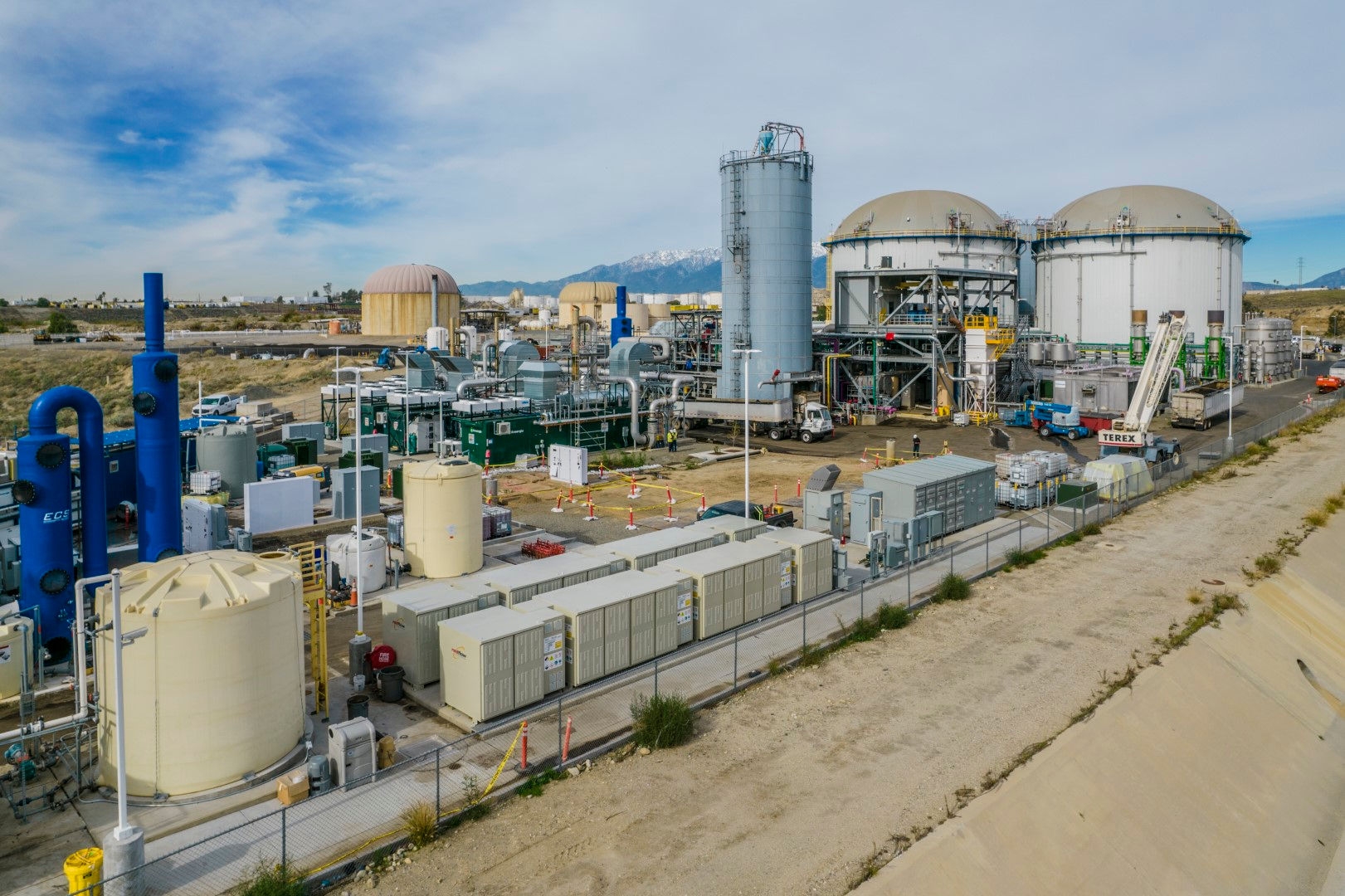Redflow’s sustainable zinc-bromine flow battery keeps the world’s critical infrastructure safe
Redflow’s zinc-bromine flow battery is providing the world with a sustainable energy storage solution. Made from recyclable materials, the rugged battery is a safer, higher-performing and longer-lasting alternative to lithium-ion batteries.
In the US, Redflow batteries are installed at a major bioenergy facility. The company has also been awarded projects to install the batteries at a children’s hospital, a large-scale solar and storage project to provide power to the Paskenta Band of Nomlaki Indians and a US Department of Defense microgrid at the Stewart Air National Guard Base. Other customers include Spanish energy giant ACCIONA Energie.
A safe, high-performing alternative to lithium-ion batteries
Founded in 2008, Brisbane-based Redflow has 270 deployments worldwide. Its zinc-bromine battery offers several advantages over lithium-ion batteries for grid-scale battery storage.
Their core materials – zinc and bromine – are abundant, cheaper, sourced from non-conflict areas and less toxic than lithium. The battery also uses water-based electrolytes, which are not only non-flammable but also act as a fire retardant. This makes the battery ideal for critical infrastructure such as hospitals, power stations and military bases, as well as areas that attract high numbers of visitors.
Redflow’s battery is also engineered to offer better performance than lithium-ion batteries. ‘Our battery is scalable to multi-MWh systems,’ says Mark Higgins, Redflow’s CCO and President, North America. ‘They have a full depth of discharge so they can go from 100% to zero and it doesn’t hurt the battery. Lithium-ion batteries can’t do that.
‘Our battery also has a unique hibernation mode – it can be shut down but still maintain its full charge indefinitely. You could boot it back up in a year and it would still be fully charged. You have to constantly recharge lithium-ion batteries to keep them ready to go.
‘Our battery doesn’t degrade over time,’ adds Higgins. ‘You don’t need to oversize a project to compensate for performance degradation as you would for lithium-ion batteries.’
Redflow’s rugged battery can be deployed in extreme environmental conditions, from minus 10°C to 45°C. It can operate in extreme heat without any supplemental HVAC air conditioning that lithium-ion batteries need.

Export success in the US
Redflow saw huge potential for its flow batteries in the US. The country has 50% of the global market for grid-scale battery storage and California has about 50% of the US market.
Redflow entered the US in 2021 after signing an agreement to supply a 2 MWh energy storage system comprising 192 zinc-bromine flow batteries for Anaergia’s Rialto Bioenergy Facility in California. The facility is deemed critical infrastructure and received funding from the California Energy Commission (CEC).
‘The bioenergy facility has been working wonderfully for Anaergia since early 2022,’ says Higgins. ‘It helped us gain the confidence of the CEC and increased our profile in the US. We still reference this project to potential customers.’
In June 2023, Redflow landed its largest single sale and deployment of batteries globally to date. The company will supply a 20 MWh flow battery system for a large-scale solar and storage project funded by the CEC. The $18 million system will be one of the world’s largest zinc-based battery projects and will provide power to the Paskenta Band of Nomlaki Indians.
In September 2023, the US Department of Defense (DoD) awarded Redflow a $4.38 million contract to repower a solar microgrid at a New York state airbase. The project is funded by the DoD’s Defense Innovation Unit, which looks for next-generation technologies that can play a role in DoD operations.
The DoD’s goal is to have energy resilience at its 450 military bases worldwide. ‘To be selected as the solution provider is validation that Redflow’s LDES solutions hold the potential to deliver significant benefits to the US Department of Defence installations worldwide,’ says Tim Harris, Redflow’s CEO and Managing Director.
Also in September 2023, the US Department of Energy approved funding for a 34.4 MWh long-duration energy storage (LDES) microgrid project. Redflow will work with its partner Faraday Microgrids to provide the batteries. The project will enable the Valley Children’s Hospital in Madera, California to replace diesel generators with cleaner, more cost-effective resources.
Expanding with Austrade’s help
Redflow is exploring expansion opportunities globally. The company looks for markets with policies that support renewables and energy storage that will open up opportunities for its technology. It typically works with project partners to secure these opportunities.
Austrade is assisting Redflow with its expansion ambitions. ‘Austrade’s insights and advice are helping us formulate a more educated global strategy,’ says Higgins. ‘They’ve given us a better understanding of market dynamics so we can progressively go into new markets.
‘We’re thrilled by the opportunity to work with Austrade,’ says Higgins. ‘They’ve been a great partner, providing market intelligence and helping us identify the right partners in different parts of the world. We've been able to use Austrade as an extension of our business development team.’
Go further, faster with Austrade
Austrade’s Go Global Toolkit helps you learn the export basics, find the right markets and understand market requirements.